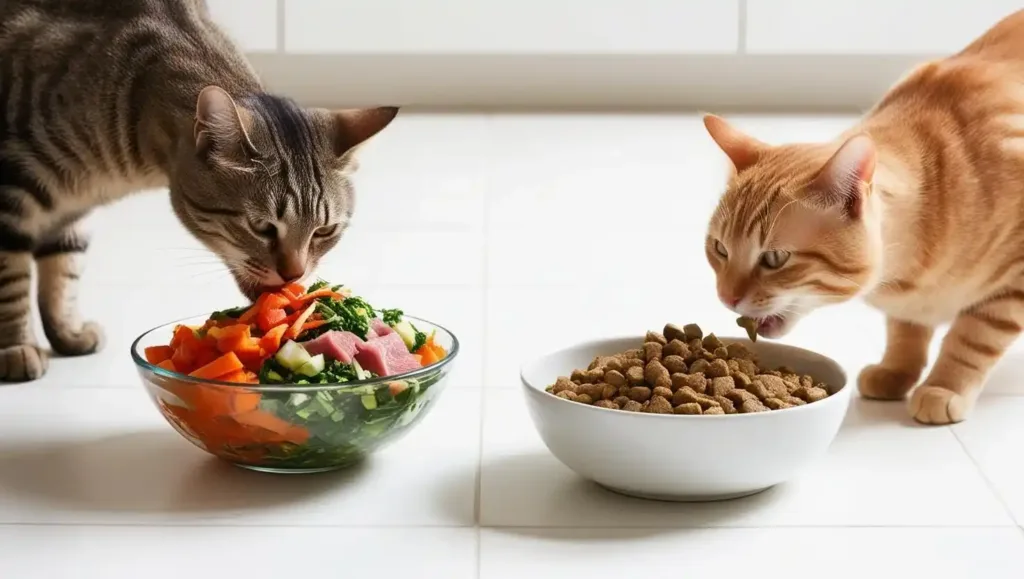When it comes to cat nutrition, few topics spark as much debate as the raw food diet. Advocates swear by its benefits, while skeptics raise concerns about safety and balance. If you’re considering switching your cat to a raw food diet, this guide will break down the pros, cons, and essential considerations to help you make an informed decision.
What Is a Raw Food Diet for Cats?
A raw food diet for cats typically consists of uncooked meat, bones, organs, and sometimes vegetables and supplements. The goal is to mimic what cats would naturally eat in the wild—small prey animals like birds and rodents.
The Potential Benefits
- Improved Digestion: Cats have short, acidic digestive tracts designed to handle raw meat efficiently. Many owners report reduced instances of vomiting and better litter box outcomes.
- Healthier Coat and Skin: High moisture content and natural fats can lead to shinier coats and healthier skin.
- Increased Energy and Lean Muscle Mass: A protein-rich diet can help maintain lean body mass and support active, playful behavior.
- Better Dental Health: Chewing on raw, meaty bones can help reduce plaque buildup and promote healthier gums.
The Risks and Concerns
- Bacterial Contamination: Raw meat can harbor harmful bacteria like Salmonella and E. coli, posing risks to both cats and their human companions.
- Nutritional Imbalance: Without careful planning, raw diets can lack essential nutrients, leading to deficiencies or imbalances.
- Bone Hazards: While raw bones are less likely to splinter than cooked ones, they can still cause choking, blockages, or dental fractures.
- Veterinary Opposition: Some vets are skeptical of raw diets due to the potential health risks and the challenge of ensuring balanced nutrition.
Making It Safe: Tips for Raw Feeding
- Consult Your Vet: Always discuss dietary changes with a veterinarian, preferably one knowledgeable about feline nutrition.
- Start with Commercial Raw Diets: If you’re new to raw feeding, consider reputable commercial raw diets that meet AAFCO standards.
- Follow Proper Food Safety: Handle raw meat with the same precautions you’d take for your own food. Wash hands, disinfect surfaces, and store meat properly.
- Balance Is Key: Ensure the diet includes muscle meat, organs, and bones in the right proportions, and consider adding supplements as advised by a vet.
Is a Raw Diet Right for Your Cat?
Every cat is different. Some thrive on raw diets, while others do better on high-quality commercial foods. Factors like age, health conditions, and your ability to manage food safety should influence your decision.
Final Thoughts
The raw food diet for cats is not a one-size-fits-all solution. While it can offer benefits, it requires careful planning and a commitment to food safety. Always consult with a veterinarian to ensure your cat’s nutritional needs are met, no matter what diet you choose.
Your cat’s health is the ultimate goal—whether that’s raw, cooked, or commercial food.

